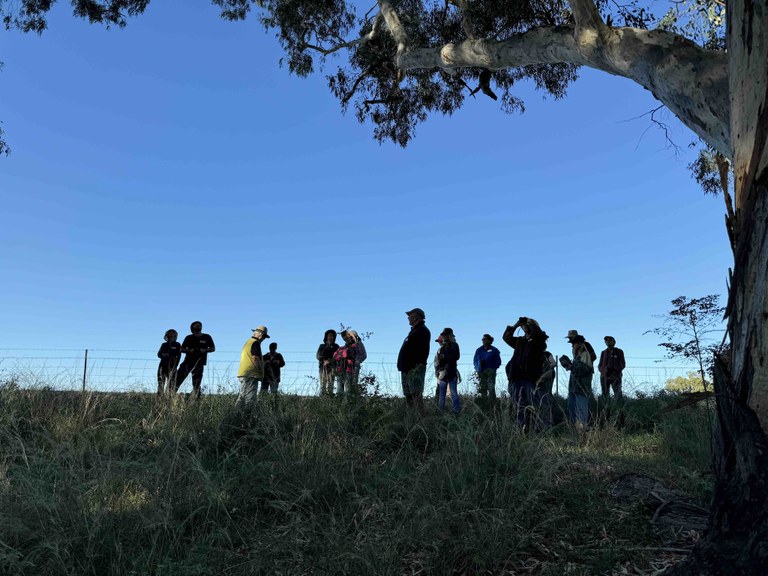
Ballimore Riverbank Picnic
A beautiful morning on the banks of the Talbragar River!
What a stunner of a day we had for our Riverbank Picnic at Ballimore on Saturday April 5.
-
A solid crowd turned out for the early morning bird walk with Jayden Gunn from BirdLife Australia to learn more about things we can do to help Glossy Black Cockatoos in the Goonoo. We also heard from Central West Local Land Services, Dubbo Field Naturalist and Conservation Society and Dubbo Environment Group about how all of these organisations are working to help this species. A big thanks to landholders Kate and Tony Charlton who are the stewards of this lovely stretch of the Talbragar River.... and the kids enjoyed the paddling!
-
WHAT DID WE SEE?
Spotted during the bird walk were: Nankeen Kestrel, Galah, Little Corella, Sulphur Crested Cockatoo, Red Winged Parrots, Eastern Rosella, Red Rumped Parrots, Fan-tailed Cuckoo, Laughing Kookaburra, Sacred Kingfisher, White-throated Treecreeper, Brown Treecreeper, Superb Fairy Wrens, Spotted Pardalotes, Striated Pardalote, Yellow Rumped Thornbill, Red Wattlebird, Striped Honeyeater, Noisy Friarbird, Little Friarbird, Blue-faced Honeyeater, White-plumed Honeyeater, Jacky Winter, Rufous Whistler, Grey Shrike-Thrush, Magpie Lark, Willie Wagtail, Black-Faced Cockoo-Shrike, Olive-Backed Oriole, Australian Raven, Red-Browed Finch and Welcome Swallows.
-
GOONOOs GLOSSY BLACK COCKYs
Jayden Gunn gave us a great intro to the threatened Glossy Black Cockatoo population in our region.
Did you know that their diet is limited to the fruit of 10 species of native Casuarina and Allocasuarina:
Allocasuarina verticillata
Allocasuarina littoralis
Allocasuarina diminuta
Allocasuarina turulosa
Allocasuarina paludosa
Allocasuarina gymnanthera
Allocasuarina luehmannii
Allocasuarina muelleriana
Casuarina cristata and
Casuarina equisetifolia.
-
The seed that Glossies extract from each seed pod of these species is TINY (like a sesame seed), so these rather large birds spend a heap of energy first finding feed trees and then just extracting enough seed to keep them going. Its exhausting just thinking about it!
-
Glossys nest in large hollows anywhere from 3 - 30m above the ground, so they are also one of the species that is impacted when Indian Myna's get aggressive in a new territory - their behaviour makes competition for good hollows even fiercer.
-
The Dubbo Field Naturalist Society have been running a Glossy Black Cockatoo Citizen Science project for a number of years. You can take part in this in November each year to help track the health and welfare of this vulnerable population.
-
KEY TAKEAWAYS:
- If you have feed species on your property - make sure they stay there AND plant more so these guys don't have to spend all their hard-earned energy looking for food!
- Keep your hollows - don't burn old dead standing trees, the hollows in these have taken hundreds of years to form and are invaluable to these types of species for nesting sites.
- Manage feral pest species. Talk to the Dubbo Environment Group if you spot Indian Myna's in your region and get hold of a trap to stop these peskies taking over important habitat. Feral cats also prey on Glossy nests. Talk to Central West Local Land Services to loan Feral Cat Traps.
- Participate in the Great Inland Glossy Count each year OR record sightings of Glossy Black Cockatoos on the Birdata app.
- Find out more about Glossy Black Cockatoos with this handy-dandy flyer from Birdlife Australia.

Thanks to all who came out to enjoy the sunshine with us!




